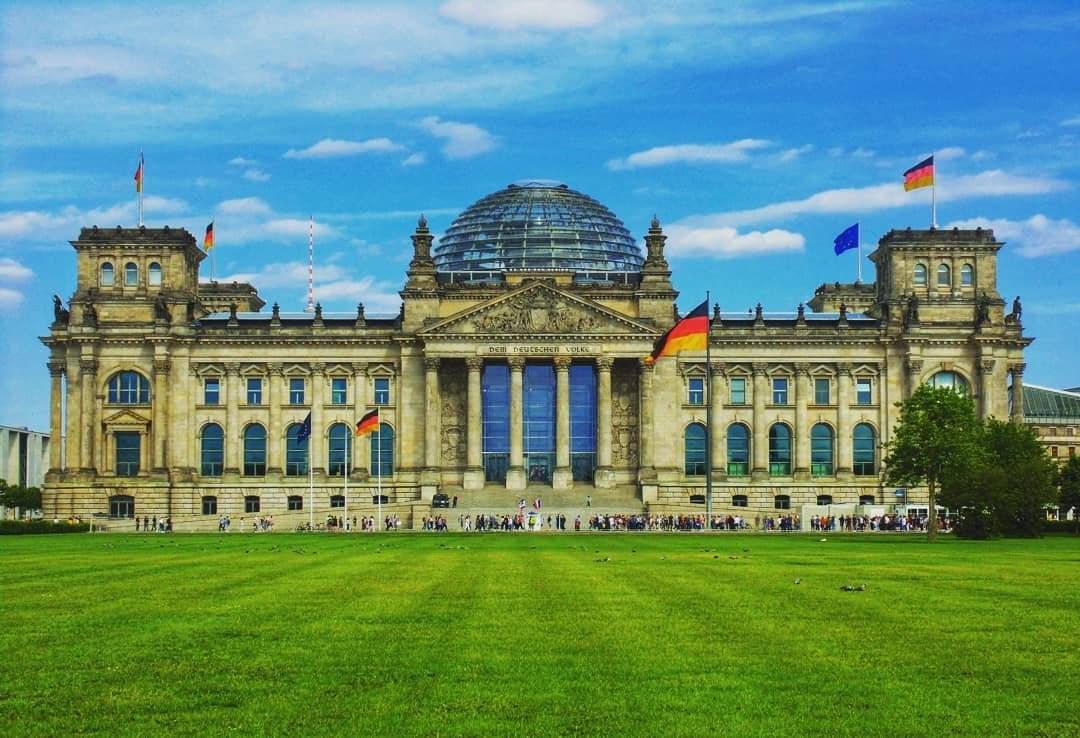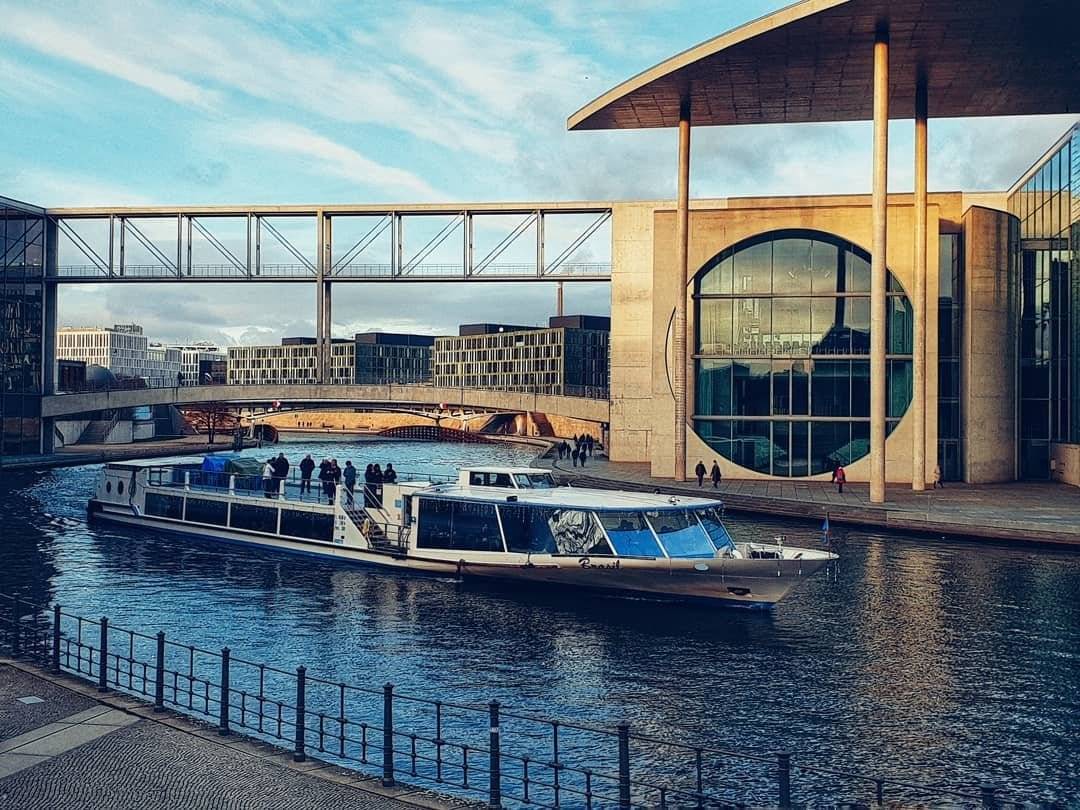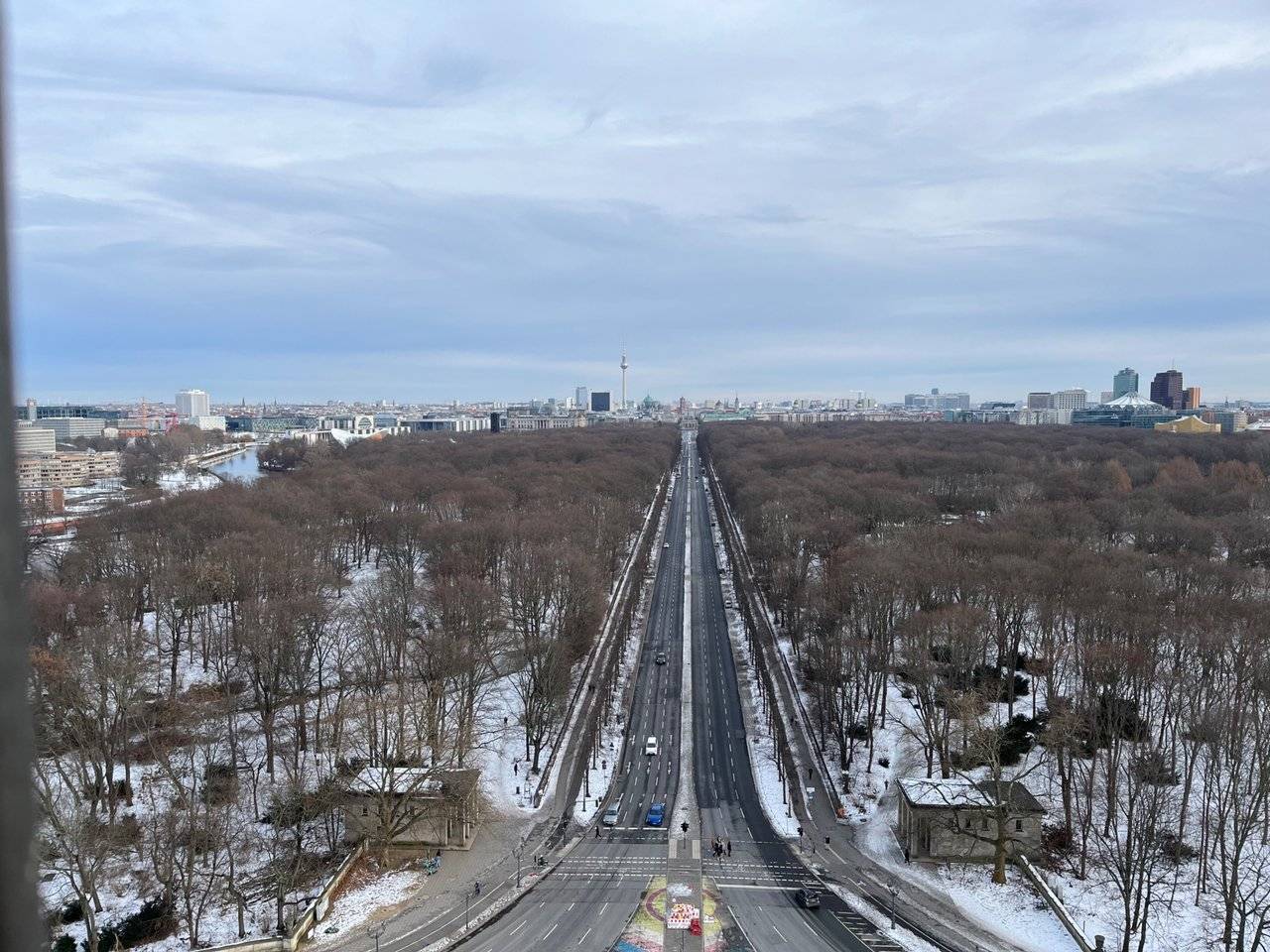In the heart of the Großer Tiergarten, on the Großer Stern, sits the majestic Berlin Victory Column. The area is huge and very busy, so access to the column is only possible safely via the T-shaped tunnels. The column was planned and built by Heinrich Strack, a pupil of Schinkel, between 1864 and 1873. Originally it stood somewhere else entirely, namely on Königsplatz, today's Platz der Republik. Johann Heinrich Strack had to change his designs several times to take into account the dynamic events of Prussia's imperial years, and it was finally inaugurated on September 2, 1873. This was the third anniversary of the victorious Battle of Sedan in France, which is also depicted on one of the reliefs at the foot of the column, but more on this in my follow-up article. The Victory Column was intended to commemorate Prussia's military successes in what later became known as the Wars of Unification and is stylistically a work of the Gründerzeit. The Victoria on its top (there is also a separate article on this) was created by Friedrich Drake and is the culmination of a series of Victoria depictions that began with works by Schinkel and Rauch.

Architectural details and relocation
The column rests on an imposing granite base, which supports a circular portico with a colorful glass mosaic (more on this later). Four sandstone column drums rise above it, the lowest three of which carry 60 captured and later gilded cannons. As part of the plans for the Reich capital "Germania", the Victory Column was removed from Königsplatz in 1938 and moved to the Großer Stern in 1939. Under the direction of Albert Speer, it was raised by a drum and the base was also widened. As a result, it is now considerably taller than Strack had planned and rises a full 67 meters into the air. Instead of the cannons, which were moved downwards, the uppermost column drum was fitted with stylistically similar golden laurel hangings. A spiral staircase with a total of 285 steps leads to the viewing platform from where you have a gigantic view over Berlin.

This costs €4 for an adult, for which you can also visit the small museum in the column. It brings visitors closer to the history of the Victory Column and shows models of other monuments that have shaped its city, such as the Colosseum in Rome, the Colonne Vendôme in Paris, or the Nelson Column in London.

This makes me think of a comparison between the Nelson Column and the Victory Column in my London vs Berlin series. I'll do that as soon as I've finished the three parts of the Victory Column - I promise! So you can look forward to a whole lot of Berlin architecture!

Ciao Kakao,
Your Morticia
Die Berliner Siegessäule: Der steingewordene Preußischer Militarismus
Im Herzen des Großen Tiergartens, auf dem Großen Stern, thront die majestätische Berliner Siegessäule. Das Areal ist riesig und sehr verkehsreich, so dass der Zugang zur Säule nur sicher über die T-förmigen Tunnel möglich ist. Geplant und erbaut wrude die Säule von Heinrich Strack, einem Schüler Schinkels, zwischen 1864 und 1873. Ursprünglich stand sie ganz woanders, nämlich auf dem Königsplatz, dem heutigen Platz der Republik. Johann Heinrich Strack musste seine Entwürfe mehrfach ändern, um den dynamischen Geschehnissen in Preußens krigerischen Jahren Rechnung zu tragen.Am 2. September 1873 wurd esie schließlich eingeweiht. Das war der dritten Jahrestag der siegreichen Schlacht von Sedan in Frankreich, die auch auf einem der Reliefs am Fuß derSäule dargetellt ist, aber dazu mehr in meinem Folgeartikel. Die Siegessäule sollte an die militärischen Erfolge Preußens in den später so geannetne Einigungskriege erinnern und ist stilistisch ein Werk der Gründerzeit. Die Viktoria auf ihrer Spitze (auch dazu gibt es extra Artikel) wurde von Friedrich Drake geschaffen und bildet den Höhepunkt einer Reihe von Viktorien-Darstellungen, die mit Werken von Schinkel und Rauch begann.

Architektonische Details und Umzüge
Die Säule ruht auf einem imposanten Granit-Sockel, der eine kreisrunde Säulenhalle mit einem farbenforohen Glasmosaik trägt (wie gesagt dazu abdernak mehr). Vier Säulentrommeln aus Sandstein erheben sich darüber, von denen die drei untersten 60 erbeutete und später vergoldete Kanonen tragen. Als Teil der Planungen zur Reichshauptstadt "Germania" wurde die Siegessäule 1938 vom Königsplatz entfernt und 1939 auf den Großen Stern versetzt. Unter der Leitung von Albert Speer wurde sie dabei um eine Trommel erhöht und auch der Sockel verbreitert. Damit ist sie heute deutlich höher als von Strack geplant und ragt ganze 67 Meter in die Höhe. Anstatt der Kanonen die nach unten versetzt wurden, bekam die oberste Säulentrommel stilistisch ähnlich gestaltete, goldenen Lorbeer-Gehänge. Über ein Wendeltreppe mit insgesamt 285 Stufen gelangt man zur Aussichtsplattform von der man eine gigantische Aussicht über Berlin hat.

Dafür sind für einen Erwachsenen 4€ zu berappen, für die man allerdings auch das kleine Museum in der Säule besuchen darf. Es bring den Besuchern die Geschichte der Siegessäule näher und zeigt Modelle weiterer städteprägender Monumente, wie dem Colosseum in Rom, der Colonne Vendôme in Paris oder der Nelson-Säule in London.

Da drängt sich mir doch ein Vergleich zwischen der Nelson Säule und der Siegessäule in meiner Serie London vs Berlin auf. Mache ich sobald ich die drei Teile Siegessäule fertig habe- versprochen! Freut Euch also auf eine ganze Menge Berliner Architektur!

Ciao Kakao,
Eure Morticia
 |  |  |
| Don't forget to reshare! | For every reshare/rehive you will get one of my Proof-of-Reshare NFTs. Current Edition: Morticia #4 only 30 pices | Don't forget to reshare! |
